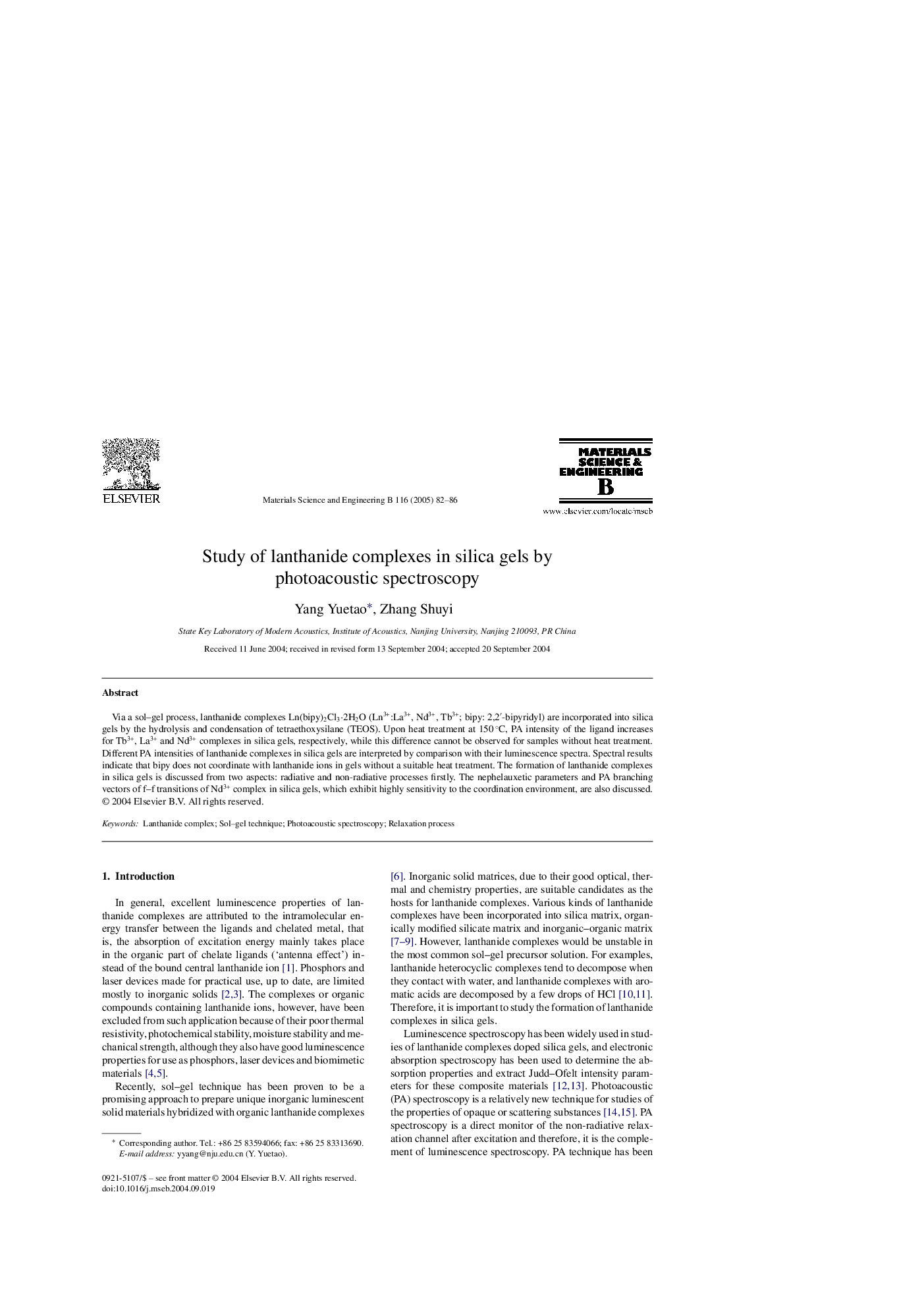| Article ID | Journal | Published Year | Pages | File Type |
|---|---|---|---|---|
| 10640196 | Materials Science and Engineering: B | 2005 | 5 Pages |
Abstract
Via a sol-gel process, lanthanide complexes Ln(bipy)2Cl3·2H2O (Ln3+:La3+, Nd3+, Tb3+; bipy: 2,2â²-bipyridyl) are incorporated into silica gels by the hydrolysis and condensation of tetraethoxysilane (TEOS). Upon heat treatment at 150 °C, PA intensity of the ligand increases for Tb3+, La3+ and Nd3+ complexes in silica gels, respectively, while this difference cannot be observed for samples without heat treatment. Different PA intensities of lanthanide complexes in silica gels are interpreted by comparison with their luminescence spectra. Spectral results indicate that bipy does not coordinate with lanthanide ions in gels without a suitable heat treatment. The formation of lanthanide complexes in silica gels is discussed from two aspects: radiative and non-radiative processes firstly. The nephelauxetic parameters and PA branching vectors of f-f transitions of Nd3+ complex in silica gels, which exhibit highly sensitivity to the coordination environment, are also discussed.
Related Topics
Physical Sciences and Engineering
Materials Science
Electronic, Optical and Magnetic Materials
Authors
Yang Yuetao, Zhang Shuyi,
